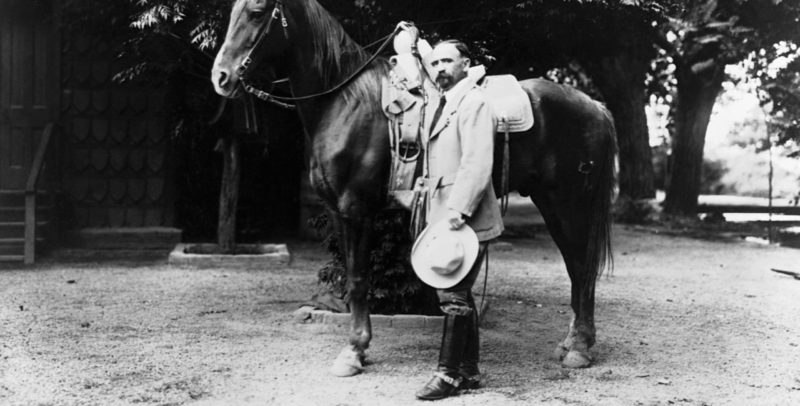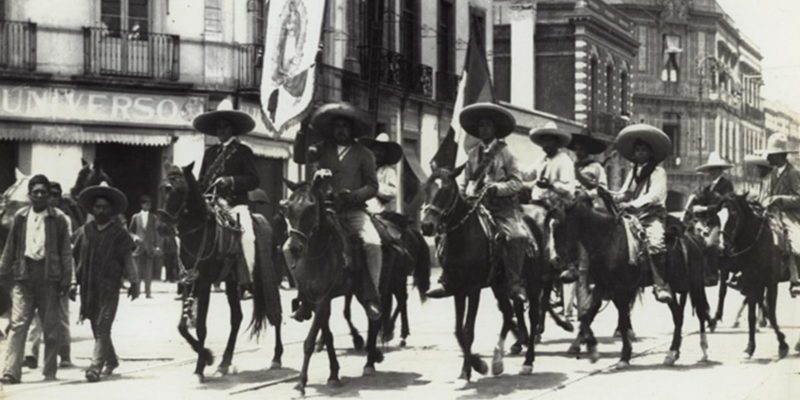We explain who Francisco Madero was and what his life was like personally and politically. In addition, the characteristics and death of him.
Who was Francisco Madero?
Francisco Ignacio Madero was a Mexican businessman, politician and revolutionary , an opponent of the Porfirio Díaz regime (the "Porfiriato"). He was president of Mexico from November 6, 1911 until his overthrow and assassination on February 22, 1913 by the coup led by Victoriano Huerta.
He had an important role in the opposition against the regime of Porfirio Díaz , who ruled Mexico with an iron fist for thirty years. As a consequence, Francisco Madero had to go into exile and was also imprisoned.
This opposition movement against the Porfiriato is considered the initial gesture of the Mexican Revolution (1910-1917). It was a period of convulsive regimes and civil war between revolutionary factions. It led to the loss of millions of lives but also to the construction of contemporary Mexico.
Madero is usually named as Francisco I. Madero . Sometimes it is wrongly held that his middle name is "Indalecio".
Birth of Francisco Madero
Francisco Madero was born on October 30, 1873 , in the hacienda "El Rosario", Coahuila State, which belonged to his family.
His parents were Francisco Madero Hernández and Mercedes González Treviño . They were a wealthy couple of owners, with mines, farms and their own businesses .
Francisco Madero's early years in politics

The family's socioeconomic status allowed him to receive a Jesuit education in Saltillo, before going to Maryland, USA , to study agriculture. He later studied commercial expertise at the École des Hautes Études Commerciales, in Jouy-en-Josas, Paris, France .
Once he graduated from there, he also studied agriculture in Berkeley, USA . He returned to Mexico in 1893, when he took over one of his father's haciendas.
His local influence was such that he founded the Independent Democratic Party , through which he opposed the re-election of Coahuila Governor Miguel Cárdenas. This first step made him come into contact with the Organizing Board of the Mexican Liberal Party, which he financially supported to relaunch its newspaper, Regeneration .
Later he broke ideologically with that party. In 1908 his first written work, The Presidential Succession of 1910 . This was a controversial book in which he openly criticized President Porfirio Díaz and demanded fair and transparent elections.
Marriage of Francisco Madero

Francisco Madero married his only wife Sara Pérez Romero in 1903 . They had no children. Sara, better known as "Sarita" or as "The First Lady of the Revolution" played a very important role as her husband's inseparable companion, to the point of being arrested along with him.
Sometimes he harangued the troops and organized proselytizing acts during the Madero government . When that government was overthrown, Sarita went into exile in Cuba and the United States. He returned to Mexico in 1921.
Opposition to Porfirio Diaz
After his first book was published, Madero announced himself as a staunch opponent of the Porfiriato , which had ruled Mexico for more than 30 years. In 1909 he founded the Anti-Reelectionist Party, with which he announced himself as a candidate for the presidency, achieving enormous popularity.
For that reason he was imprisoned in San Juan Potosí, from where he went into exile in the United States. While there he planned and promulgated the Plan of San Luis, a call to arms against the government that finally forced the resignation of Porfirio Díaz.
Presidency of Mexico

Francisco Madero's government succeeded that of the dictator Porfirio Díaz in 1911. Despite his intentions to please the common people , he failed to understand and satisfy the demands for social change of the revolutionary masses.
This need was found especially in the countryside , which expressed its disagreement with different uprisings. Among them, those of Emiliano Zapata, Pascual Orozco or Victoriano Huerta distinguished themselves. The latter was the one who succeeded in removing Madero from power.
Contributions of Francisco Madero
Madero was a key player in the fall of the Porfiriato, since his efforts, his militancy and his political daring promoted the organization of the masses who clamored for change . In addition, his Plan of San Luis served as an example for later revolutionary calls to arms, some of which were against him.
In addition, his government insisted on democratic bases , making real (and unsuccessful) efforts to pacify the Mexican nation and demand the surrender of the revolutionary troops. For this he allied himself with the Maderista elites. However, he was unsuccessful, as evidenced by the coup d'état with which he was overthrown.
Victoriano Huerta's coup d'état
Madero's mandate culminated in 1913 with a coup d'état promoted by Victoriano Huerta . This military leader , loyal to the Porfirista regime, had the support of the United States. Before, he had been appointed by Madero himself to combat the military uprisings against him.
His uprising inaugurated the so-called "Tragic Decade" : the ten-day period at the end of which the military man Huerta, together with Aureliano Blanquet, deposed Madero's government. In exchange for his resignation they promised him protection and to let him go to Cuba.
Already at that time , the coup plotters had assassinated Gustavo Madero, the president's brother . Various nations had spoken in favor of the preservation of Madero's life. Many ambassadors interceded and finally both the president and the vice president (Pino Suárez) signed their resignation.
Assassination of Francisco Madero
After Madero's resignation, the provisional government fell to Pedro Lascuráin , Minister of Foreign Affairs. Lascuráin governed for 45 minutes, which was enough for him to name Huerta secretary of government and present his resignation, leaving the latter formally in charge of the country.
The first measure taken by Huerta in his new position was to order the execution of Madero and Suárez . This was carried out in front of the Lecumberri Palace, bringing down the detainees to execute them with a shot to the head.
To make everything look like a guerrilla attack, they fired a total of 2 shots at Madero's head and 13 at Suárez , as well as several shots at the car in which they were being transported. The news was announced the next day, and the plot was discovered several years later.
Mexican Revolution

During Madero's government, clashes began that later led to a long and violent period in the history of his country, known as the Mexican Revolution. In this bloody civil war, more than a million people perished , belonging to the various opposing sides.
The revolutionary forces initially rose up against the Huerta government . However, they later clashed with each other. They conspired among themselves to seize power, following the different regional leaders such as Venustino Carranza, Emiliano Zapata or Francisco "Pancho" Villa .
Phrases from Francisco Madero
- “ Effective suffrage . No re-election."
- "Rare are those who, with absolute power, maintain moderation and do not give free rein to their passions."
- "Public power cannot have any other origin or any other basis than the national will."
- "I am more proud of the victories obtained in the field of democracy than those achieved on the battlefields."
- "The peoples, in their constant effort so that the ideals of freedom and justice triumph , are forced at certain historical moments to make greater sacrifices."
The above content published at Collaborative Research Group is for informational and educational purposes only and has been developed by referring to reliable sources and recommendations from technology experts. We do not have any contact with official entities nor do we intend to replace the information that they emit.
Luke is passionate about fostering student involvement and connection. He studied psychology for his major and likes learning about the past. Luke aims to specialize in artificial intelligence and cybersecurity. .
Leave a reply
Your email address will not be published. Required fields are marked *Recent post

Sport: What Is It, Types, Risks, Features, Characteristics and Examples

Dogs: Emergence, Features, Characteristics, Feeding and Breeds

Story: Definition, Elements, Structure, Features and Characteristics

